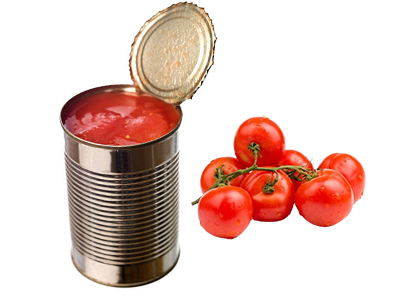Kirish
Tomato sauce is more than just a kitchen staple—it’s a symbol of cultural identity, a vehicle of culinary creativity, and a product of evolving technology. From its humble beginnings in ancient Mesoamerican civilizations to its sophisticated role in futuristic food manufacturing, tomato sauce production machine tells a story that intertwines agriculture, cuisine, chemistry, and commerce. This comprehensive exploration traces its journey across time and space, examining how it has shaped and been shaped by humanity.
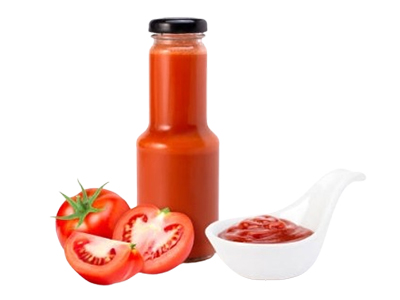
Part I: Origins of the Tomato
1.1 The Tomato in Pre-Columbian America
The tomato (Solanum lycopersicum) is native to western South America and was first domesticated by the indigenous peoples of Mexico. The Aztecs and Mayans incorporated tomatoes into their cuisine, creating early versions of what could be considered sauces. These early preparations were mixed with chili peppers, ground seeds, and other local ingredients.
1.2 European Discovery and Skepticism
Tomatoes were introduced to Europe in the 16th century after the Spanish colonization of the Americas. Initially met with suspicion and believed to be poisonous due to their resemblance to deadly nightshade, tomatoes were slow to gain culinary acceptance. It wasn’t until the 18th century that they became widely used in Mediterranean cuisine.
Part II: Tomato Sauce in Global Cuisines
2.1 Italiya: The Heartland of Tomato Sauce
No nation is more closely associated with tomato sauce than Italy. The integration of tomatoes into Italian cuisine began in the late 17th century, culminating in iconic dishes like pasta al pomodoro and pizza margherita. Regional varieties—like Neapolitan, Sicilian, and Bolognese—demonstrate the diversity of Italian tomato-based preparations.
2.2 Spain and Latin America: Spices and Traditions
In Spain, tomato sauce evolved into sofrito, a blend of tomatoes, piyoz, sarimsoq, and olive oil. In Latin America, tomato-based sauces incorporate local spices, sweet peppers, and tropical ingredients. Salsa roja and mole rojo are examples of traditional preparations that highlight regional flavor profiles.
2.3 The United States: From Ketchup to Marinara
In the U.S., tomato sauce adapted to industrialized food systems. Ketchup became a sweetened, vinegar-based condiment, while marinara and barbecue sauces developed distinct regional identities. Italian-American cuisine contributed to the widespread use of tomato sauces in dishes like spaghetti and meatballs.
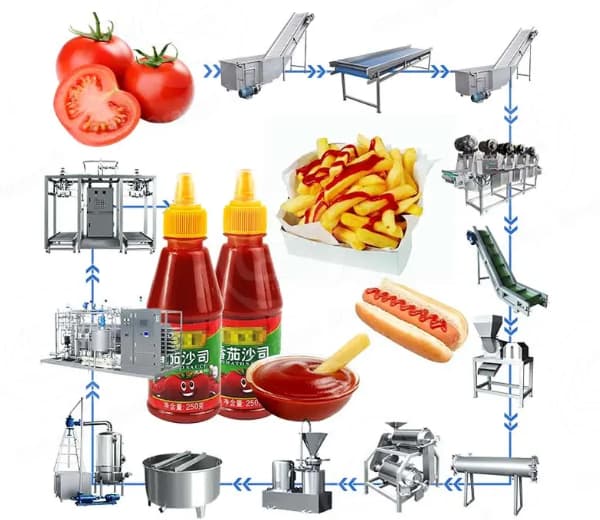
Part III: Industrialization and Mass Production
3.1 Canning and Preservation
The 19th-century advent of canning revolutionized the tomato sauce industry. Louis Pasteur’s discoveries in microbiology enabled safer food preservation, extending shelf life and facilitating global distribution.
3.2 Global Brands and Commercialization
By the early 20th century, companies like Heinz, Hunt’s, and Del Monte began mass-producing tomato products. These brands standardized flavors and made tomato sauce a pantry essential across continents.
3.3 Machinery and Automation
Modern tomato sauce production relies on advanced machinery for washing, saralash, maydalash, bo'sh, and pasteurization. Automation has increased efficiency, izchillik, va xavfsizlik, enabling large-scale operations with minimal labor.
Part IV: Technological Advances in Tomato Sauce Production
4.1 High-Pressure Processing (HPP)
HPP extends shelf life without the need for high-heat processing, preserving the fresh flavor and nutritional content of tomato sauces. It’s increasingly used for premium sauces and organic brands.
4.2 Vacuum Evaporation
Vacuum evaporation concentrates tomato sauce at lower temperatures, preserving color and flavor. It’s a critical step in the production of tomato paste and ketchup.
4.3 AI and Smart Manufacturing
AI systems now monitor temperature, viscosity, kislotalilik, and other parameters in real time. Predictive maintenance and machine learning optimize processing efficiency and product quality.
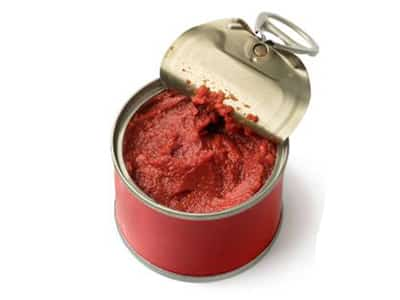
Part V: Tomato Sauce and Nutritional Science
5.1 Lycopene and Antioxidants
Tomatoes are rich in lycopene, a powerful antioxidant linked to reduced risks of heart disease and cancer. Cooking tomatoes increases the bioavailability of lycopene, making tomato sauce a nutritional powerhouse.
5.2 Fortification and Dietary Trends
Modern sauces are often fortified with vitamins and minerals. Low-sodium, sugar-free, and gluten-free versions cater to health-conscious consumers.
5.3 Tomato Sauce in Specialized Diets
From vegan to keto diets, tomato sauce adapts easily due to its versatility and plant-based origin. It serves as a base for countless dishes in meal plans focused on whole foods.
Part VI: Environmental and Ethical Considerations
6.1 Sustainable Farming
Tomato cultivation is water-intensive. Innovations in drip irrigation, crop rotation, and organic farming aim to reduce environmental impact.
6.2 Packaging Innovations
Eco-friendly packaging—such as biodegradable containers and recyclable pouches—reduces the carbon footprint of tomato sauce distribution.
6.3 Labor and Fair Trade
Labor conditions in tomato farms have sparked ethical concerns. Fair trade certifications and corporate accountability initiatives are working to ensure fair wages and safe working environments.
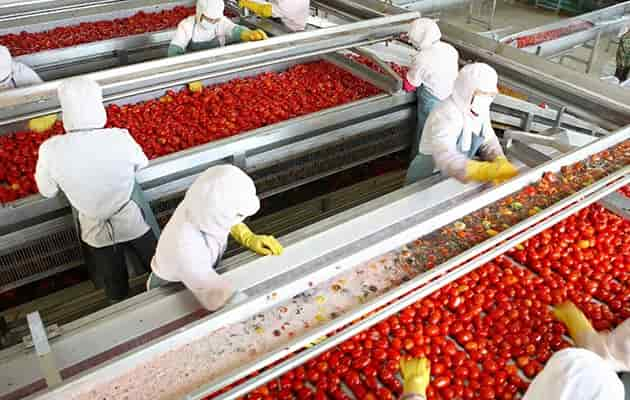
Part VII: Tomato Sauce in Popular Culture and Media
7.1 Film and Literature
Tomato sauce appears in countless films and books as a symbol of comfort, home, and cultural identity. Think of the iconic “Godfather” kitchen scene or Elizabeth Gilbert’s descriptions in Eat, Pray, Love.
7.2 Advertising and Branding
Catchy jingles and memorable packaging (like the classic Heinz ketchup bottle) have elevated tomato sauce from a condiment to a cultural icon.
7.3 Culinary Shows and Social Media
Tomato sauce recipes are social media favorites, with influencers sharing traditional and modern takes across TikTok, Instagram, and YouTube.
Part VIII: Regional Variations and Recipes
8.1 Classic Italian Marinara
A simple blend of tomatoes, sarimsoq, olive oil, and herbs. Served with pasta or as a pizza base.
8.2 Indian Tomato-Based Gravies
Tomatoes form the base for many Indian curries, often blended with ginger, sarimsoq, and spices like turmeric and garam masala.
8.3 Middle Eastern and North African Sauces
Shakshuka, a dish of poached eggs in spiced tomato sauce, is a staple across the Middle East and North Africa.
8.4 Fusion and Experimental Sauces
Modern chefs experiment with fermentation, smoke infusion, and unusual ingredients (like seaweed or beetroot) to create unique tomato sauces.
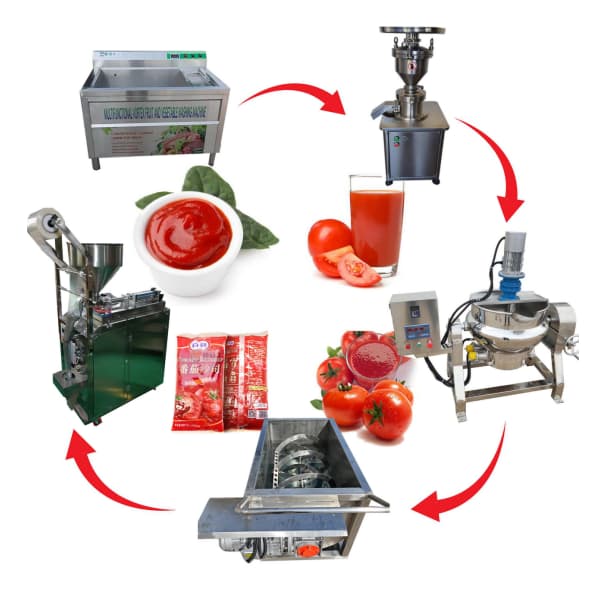
Part IX: Future of Tomato Sauce
9.1 Lab-Grown Tomatoes and Vertical Farming
Vertical farming and gene editing are making tomato cultivation more sustainable and adaptable to urban environments. Lab-grown tomato cells may become a reality in high-tech kitchens.
9.2 3D Food Printing and Customized Nutrition
Imagine printing a tomato sauce enriched with specific nutrients based on your DNA profile or health metrics. This is no longer science fiction.
9.3 AI-Generated Flavor Profiles
AI is now being used to design new flavor combinations that suit regional tastes or dietary needs. Companies can release limited edition sauces optimized by machine learning.
From Aztec salsas to AI-optimized sauces, the journey of tomato sauce reflects the evolution of human civilization itself. It bridges cultures, adapts to technologies, and continues to nourish and inspire us. Whether lovingly simmered in a home kitchen or precision-made in a futuristic factory, tomato sauce remains a universal language of flavor.
Texnik xususiyatlari jadvali: Tomato Sauce Production Machinery
| Mashina turi | Funktsiya | Chiqish qobiliyati | Quvvat iste'moli | Material |
|---|---|---|---|---|
| Kir yuvish mashinasi | Yangi pomidorni tozalaydi | 1000–5000 kg/h | 3–7 kW | Zanglamaydigan po'lat |
| Sorting Conveyor | Manual/optical sorting of tomatoes | 500-3000 kg / soat | — | Zanglamaydigan po'lat |
| Maydalash mashinasi | Pomidor pomidorni pul bilan buzadi | 1000–6000 kg/h | 5–10 kW | Zanglamaydigan po'lat |
| Bo'sh & Refining Unit | Separates skins/seeds from juice | 500–5000 kg/h | 4–8 kW | Zanglamaydigan po'lat |
| Evakator | Concentrates tomato juice | 300-3000 kg / soat | 20–100 kW | SS316L |
| Tank | Mixes ingredients for sauce | 500–2000 L | 3–5 kW | SS316L |
| Pasterlovchi | Heat-treats sauce for preservation | 1000–5000 L/h | 10–30 kW | SS304 |
| To'ldirish mashinasi | Fills jars/bottles with sauce | 1000–6000 bph | 3–10 kW | SS304 |
| Capping Machine | Seals containers | 1000–6000 bph | 2–5 kW | SS304 |
| Labeling Machine | Applies labels | 1000–7000 bph | 2–4 kW | SS304 |
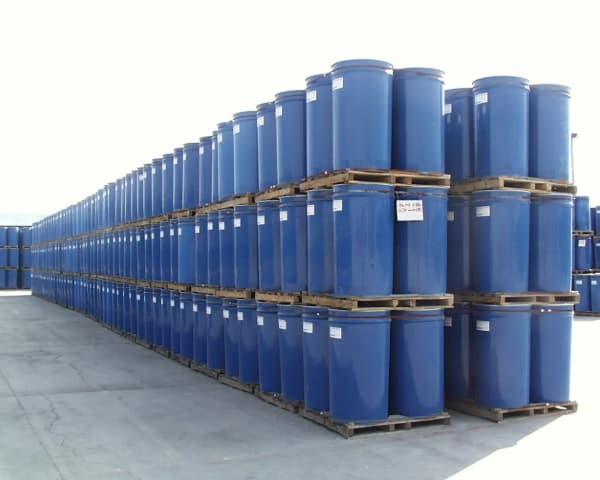
Rsil (Iqtibos uchun so'rov) Tips for Tomato Sauce Machines
- Define Your Capacity – Know how much sauce you want to produce per hour.
- Specify Automation Level – Choose between semi-automatic and fully automatic lines.
- Request Material Grade - Zanglamaydigan po'lat 304/316 is preferred for food safety.
- Inquire About Certifications - men, Iso, FDA-compliance for export.
- Check After-Sales Service – Ask about installation, o'rgatish, va ehtiyot qismlar.
- Compare Energy Efficiency – Energy-saving models reduce operating costs.
- Request 3D Layout Drawings – Ensure equipment fits your factory.
- Ask for Testing and Commissioning – Confirm machines are pre-tested before shipping.
Yakuniy fikrlar
Tomato sauce, ancient and modern, humble and high-tech, connects us across time and borders. As we look to a future shaped by climate change, texnologiya, and global food security, tomato sauce reminds us that even the simplest foods can carry deep meaning and endless possibility.

